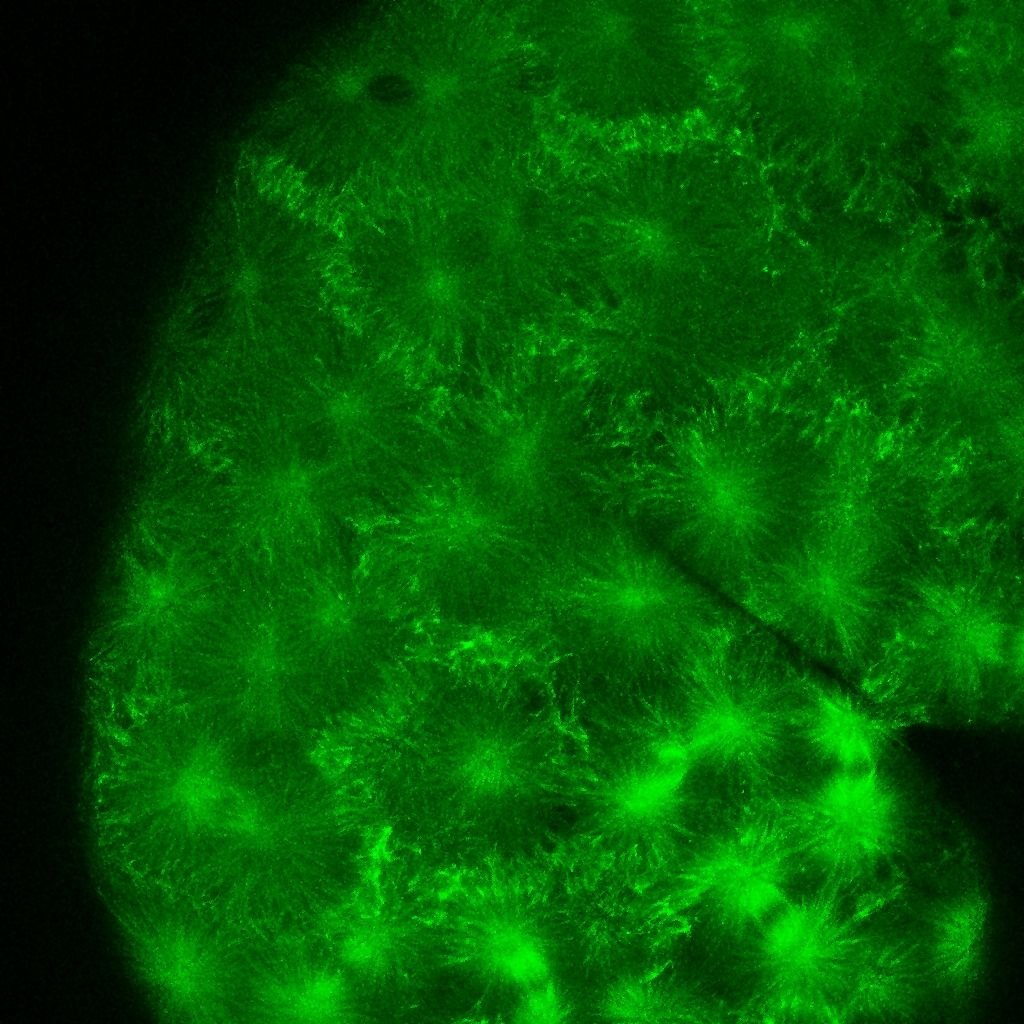New microscopy method visualizes microtubules in cells of living fish
May 17, 2012

Using a new microscopy method called multifocal SIM (MSIM), nanoscale cell structures such as microtubules (shown here) can be observed in living fish embryos (credit: NIH, KIT)
A new hybrid method to visualize cell structures in living fish larvae has been developed by researchers of Karlsruhe Institute of Technology (KIT), the Max Planck Institute for Polymer Research, Mainz, and the U.S. National Institutes of Health (NIH).
“The zebrafish is perfectly suited for genetic studies of cells, as its larvae are completely transparent,” explains Marina Mione of KIT.
Microtubules, a key component of the the cell’s cytoskeleton, have a length of about 100 µm and a diameter of about 20 nm, corresponding to a hundred thousandth of a human hair.
The new hybrid microscopy method is called multifocal SIM (MSIM), which combines the resolution-doubling characteristics of structured illumination microscopy (SIM) with the physical optical sectioning of confocal microscopy. The method uses commercially available parts and open-source software, allowing for easy integration with wide-field microscopes.
The object is not illuminated completely, but only at a certain spot with special light. Scattered light is minimized and the illuminated detail is represented sharply. A series of images taken at variable illumination is then processed by a computer.
Smart illumination even allows for adjusting the depth of field to image various depth levels, and to combine them into a 3D image on the computer.
The researchers observed the early stage of the fish’s lateral line, which develops about 45 µm below the skin of the fish. Via this organ, the fish perceives movement stimuli in water. Such images of living organisms also provide valuable findings regarding the development of vertebrates on the cellular level.
The tropical zebrafish living in freshwater has several advantages as a genetic model organism. It is sufficiently small for easy cultivation and large enough to easily distinguish individual organs. It has a short generation cycle and produces many offsprings. And as a vertebrate, it has a number of microbiological properties in common with human beings.
Ref.: Andrew G York et al., Resolution doubling in live, multicellular organisms via multifocal structured illumination microscopy, Nature Methods, 2012, DOI: 10.1038/nmeth.2025